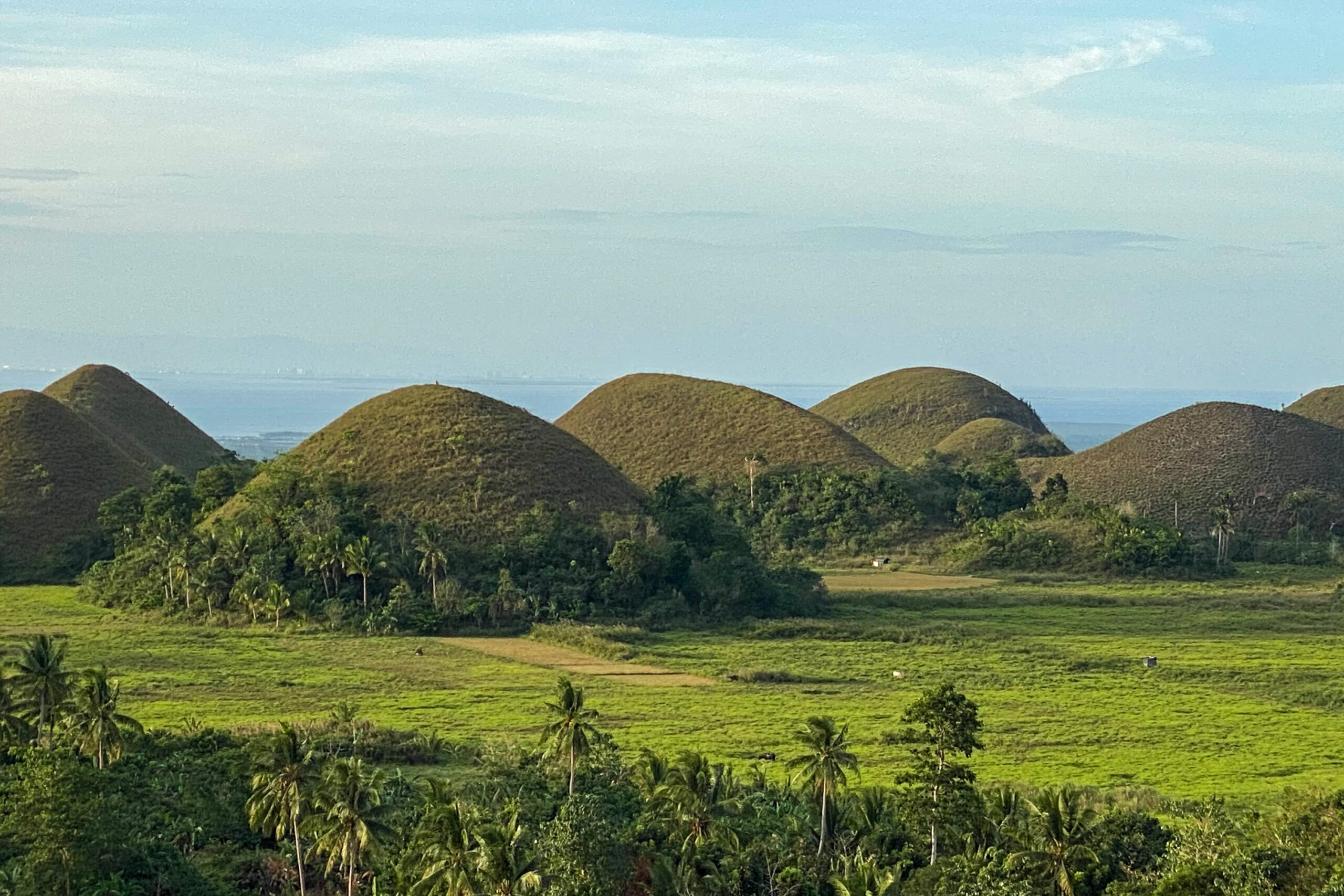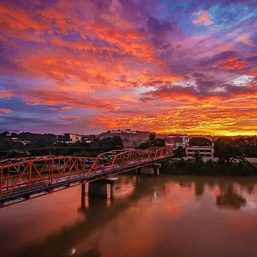SUMMARY
This is AI generated summarization, which may have errors. For context, always refer to the full article.

CEBU, Philippines – Environmental group Tagbilaran Baywatch urged government officials to revoke the Protected Areas Management Board (PAMB) resolutions that permitted the construction and operation of resorts within the protected zones of the Chocolate Hills Natural Monument (CHNM) in Bohol.
“Tagbilaran Baywatch asked for the revocation of these PAMB resolutions to nullify all acts and/or permits arising therefrom, and to nullify the illegal ‘20% area from the base of the hill policy’ of the PAMB on developments applied within the CHNM without any provision for a drawback/buffer zone,” the group said in its position paper sent to Rappler on Sunday, April 14.
The pro-environment group also urged the government to demolish the structures found within the CHNM and compensate property owners.
The resolutions, namely PAMB Resolution No. 1, s. 2018 and PAMB Resolution No. 21, s. 2022, endorsed the construction of the controversial Captain’s Peak Resort, which had structures built on the base of Chocolate Hills.
The group said that the resolutions violated Presidential Proclamation No. 333, the Expanded National Integrated Protected Areas System (E-NIPAS) Act of 2018 and the National Cultural Heritage Act of 2009.
Proclamation No. 333, which created the protected area, states that the land within 20 meters from the baseline of every hill outward is considered part of the CHNM and serves as a drawback or buffer zone.
The E-NIPAS Act recognized the existence of these buffer zones while the National Cultural Heritage Act prohibits any form of construction on the national monument— the Chocolate Hills was declared a National Geological Monument in 1988.
Tagbilaran Baywatch added that PAMB issued another “faulty” resolution on January 25 which sought to propose amendments to the rules and regulations for the development and management of ecotourism sites within the CHNM.
The proposed amendments of the new PAMB Resolution No. 2, s. 2024, included a ban on constructing buildings, fencing, pole/s, and other ecotourism related developments within the hills with unique features, excluding the rehabilitation of existing structures.
“All developments will have a setback of 5 meters from the foot of the hills with unique features,” another proposed amendment read.
The environmentalists slammed the proposed amendments for only limiting the construction of buildings within the hills to those “with unique features” and still allowing the rehabilitation of existing structures on the hills.
“Tagbilaran Baywatch equally condemns these two illegal provisions of this new Resolution No. 2, Series of 2024, which, like its predecessors, violate the 20-meter buffer zone provided for by Proclamation No. 333 and adopted in (the E-NIPAS Act),” they said.
Based on a copy of the document, PAMB Secretary Lorna Fernandez, Bohol Provincial Environment and Natural Resources (PENR) Officer Ariel Rica, and Nestor Canda, a former Bohol PENR Officer and the Barangay Chairman of Poblacion Sur in Batuan town, signed Resolution No. 2, s. 2024.
Mother of all resolutions
The Tagbilaran Baywatch, in another position paper on March 26, asked for the revocation of PAMB Resolution No. 5, s. 2012, a document which they called the “mother of all resolutions”.
The said document listed down the major rules and regulations for the construction and management of ecotourism developments in the CHNM.
A copy of the resolution sent to Rappler by lawyer Esther Gertrude Biliran of the Tagbilaran Baywatch showed that the resolution was approved on May 4, 2012, and signed by former Department of Environment and Natural Resources (DENR) Central Visayas director Maximo Dichoso.
One of the regulations of the resolution states that a maximum of 3 structures would be allowed within 20% of the portion of the hill from the baseline. This same policy was cited in the resolutions that endorsed the construction of the Captain’s Peak Resort.
Tagbilaran Baywatch already claimed on March 23, that this policy violated Proclamation No. 333 and called for an explanation from the DENR and PAMB as to why they allowed it.
On March 25, Bohol Governor Erico Aristotle Aumentado sent a letter to DENR Central Visayas director Paquito Melicor Jr., requesting that the PAMB of the CHNM be convened to revoke Resolution Nos. 5, s. 2012, 1, s. 2018, and 21, s. 2022.
“This will prevent the introduction of similar developments in the protected area that will violate the law,” the governor said.
On April 5, Melicor issued a memorandum, instructing Rica to schedule a meeting with the PAMB of the CHNM and review Aumentado’s request and the findings from the April 3 Senate hearing on the Chocolate Hills issue.
Biliran told Rappler on Monday, April 15, that House of Representatives and the Senate have received copies of the position paper. – Rappler.com
Add a comment
How does this make you feel?

















![[OPINION] Grading Marcos admin’s performance on the climate agenda](https://www.rappler.com/tachyon/2024/06/grading-marcos-performance-climate-agenda-june-25-2025.jpg?resize=257%2C257&crop=441px%2C0px%2C1080px%2C1080px)
![[OPINION] Dipolog City: Is it modernization or cultural revision that’s happening?](https://www.rappler.com/tachyon/2024/07/dipolog-feature-july-6-2024.jpg?resize=257%2C257&crop=0px%2C0px%2C720px%2C720px)



There are no comments yet. Add your comment to start the conversation.